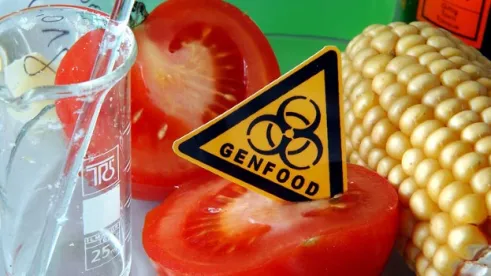As previously reported on this blog, legislation requiring labeling of genetically modified (GM) foods and food ingredients was signed into law on July 29, 2016. This law directs the U.S. Department of Agriculture (USDA) to develop regulations and standards to create mandatory disclosure requirements for bio-engineered foods by July 2018. Under the new law, food companies would have three options to disclose GMO ingredients: the use of on-package text, a USDA-created symbol, or an internet link — i.e., a QR code printed on the package that directs customers to GMO information.
Yesterday, USDA’s Agricultural Marketing Service (AMS) posted a list of 30 questions to obtain stakeholder input to facilitate the drafting of mandatory disclosure requirements to implement the National Bioengineered Food Disclosure Law. Many of the questions are open-ended in nature and request stakeholder feedback on how to best define certain terms, how to determine if a product requires a GMO label and what on-package symbol should be used to denote GMO ingredients. Notable questions include:
-
“What terms should AMS consider interchangeable with bioengineering, and what amount of a bioengineered substance present in a food should make it be considered bioengineered?”
-
“Will AMS require disclosure for food that contains highly refined products, such as oils or sugars derived from bioengineered crops?” In connection with this question, AMS notes that “many processed foods may contain ingredients derived from bioengineered crops, such as highly refined oils or sugars that contain undetectable levels of bioengineered genetic material such that they are indistinguishable from their non-engineered counterparts. AMS is considering whether to require disclosure for foods containing those derived ingredients that may be undetectable as bioengineered.”
-
“Meat, poultry, and egg products are only subject to a bioengineered disclosure if the most predominant ingredient, or the second most predominant ingredient if the first is broth, stock, water, or similar solution, is subject to the labeling requirements under FFDCA. How will AMS determine the predominance of ingredients?”
-
“Should AMS consider more than one disclosure category?”
-
“If a manufacturer chooses to use text to disclose a bioengineered food, what text should AMS require for a text disclosure?”
-
“What are the reasonable disclosure options AMS should provide for food contained in very small or small packages?”
USDA is concurrently completing a study examining the challenges of GMO disclosure through a smartphone-scannable digital code for both consumers and retailers which could reignite controversy regarding the best way to inform consumers about GMO ingredients.
Looking ahead, USDA officials remain optimistic that the Agency remains on track to meet the July 2018 deadline to publish a final rule as mandated under the National Bioengineered Food Disclosure Law. Presumably, the current request for stakeholder feedback is part of the Agency’s efforts to meet this deadline by soliciting feedback on the issues they anticipate will be the most contentious in the course of the formal rulemaking process.



 />i
/>i

